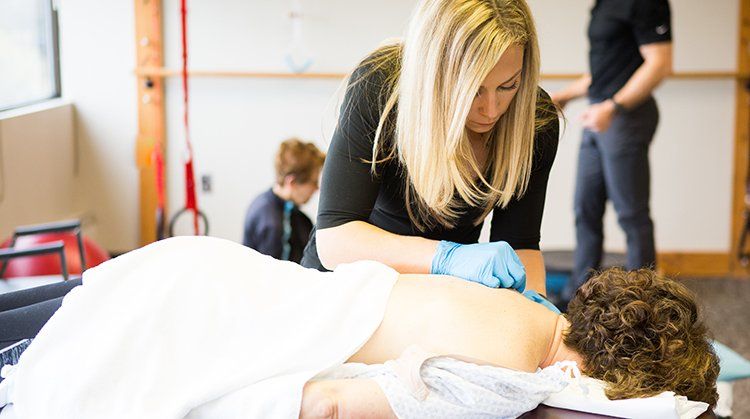



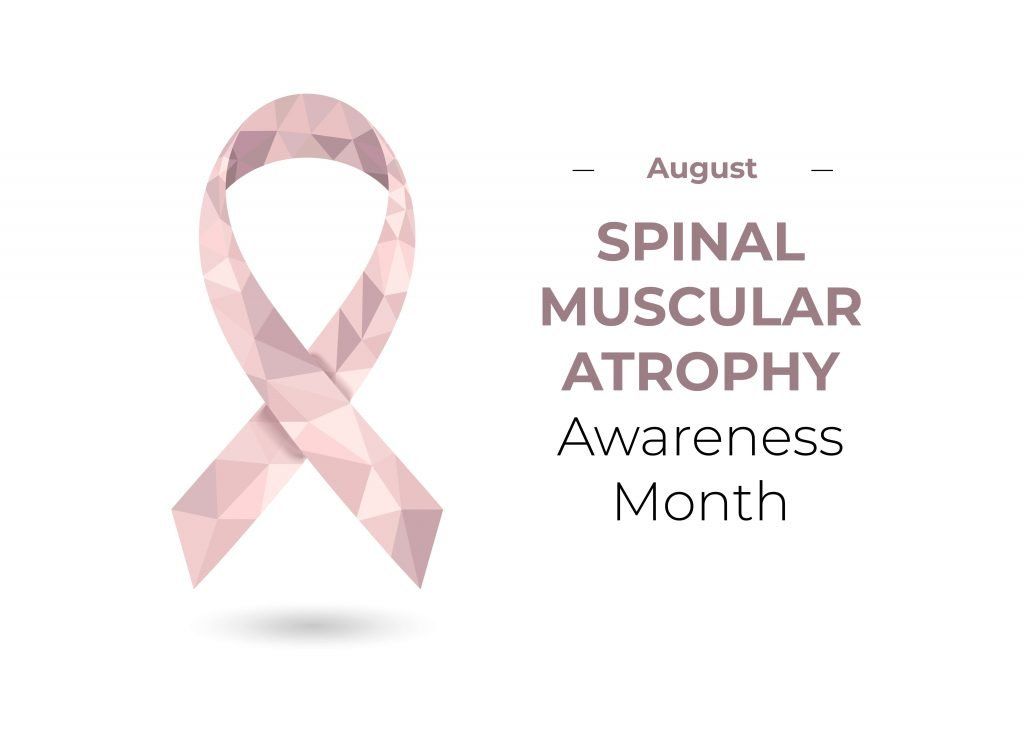
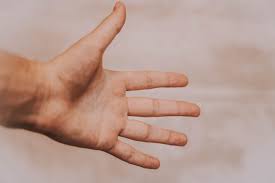

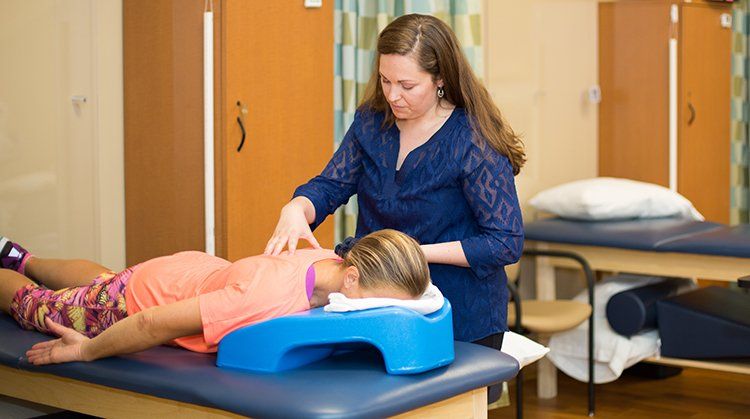
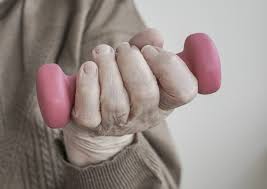
A groin strain is an injury to the groin—the area of the body where the abdomen meets the leg and the inner thigh muscles attach to the pubic bone. Typically, groin strains occur in the muscles of the upper inner thigh near the pubic bone or in the front of the hip. This injury tends to be more common in athletes and men; however, certain activities can increase the risk for anyone to experience a groin strain. Groin strains can occur during sprinting or any type of activity requiring forceful movement of the leg, such as jumping, kicking the leg up, or changing directions while running. Groin strains account for 10% of all hockey injuries and 5% of all soccer injuries. Physical therapists treat groin strains by reducing pain and helping patients improve muscle strength and leg motion and to increase the speed of recovery.
What is a Groin Strain?
A groin strain is an overstretch or tearing injury to the muscles of the inner thigh or front of the hip. Groin strains make walking, lifting the knee, or moving the leg away from or toward the body difficult and painful. Groin strains can occur from overuse of the muscles, or from a sudden contraction of the muscles.
Injury occurs when the muscles are either too forcefully contracted or too forcefully overstretched. Groin strains are graded according to the amount of muscle damage that occurs:
| Groin Strain |
When groin muscles are strained or torn, muscle fibers and other cells are disrupted. Bleeding can occur, which causes bruising. Within a few minutes to a few hours after the injury, swelling can occur, causing the injured area to expand and feel tight and stiff.
Although groin strains most often occur in athletic activities such as football, soccer, and dance, they also can occur during everyday activities, such as lifting heavy items or slipping while walking.
How Does it Feel?
A groin strain causes sharp pain or spasms in the groin area or lower abdominal region. The pain can quickly resolve, or it can persist, developing into a throbbing pain at rest with sharp stabs of pain when you try to move your leg or walk. A lower-grade strain can be relatively pain free with everyday activities and walking, but aggravated with quick movements of the legs such as cutting, kicking, performing sit-ups, or sprinting/running. Higher-grade strains can cause the muscles to feel tight or weak. Simple movements that involve trying to lift the leg or knee, or bringing the knees together, can provoke pain, and even cause the groin muscles to spasm. If the groin strain involves a Grade 3 (complete) tear, a "pop" may be felt or heard when the muscle tears at the time of injury, and using the leg at all can be extremely painful.
Signs and Symptoms
With a groin strain, you may experience one or more of the following symptoms in the groin area or lower abdomen:
You might also experience one or more of the following symptoms:
How Is It Diagnosed?
If you see your physical therapist first, your therapist will conduct a thorough evaluation that includes taking your health history. The first goal of your physical therapist is to exclude any other serious conditions causing your symptoms that would warrant a referral to another health care provider. Since groin pain can be present with other diagnoses involving your hip, pelvis, or lower back, your physical therapist may ask specific questions or use additional tests to assess the possible contribution of these other regions to your pain.
Your physical therapist may ask you:
Your physical therapist will perform special tests to help determine a diagnosis of a groin strain, such as:
To provide a final diagnosis, your physical therapist may collaborate with an orthopedist or other health care provider. The orthopedist may order further tests—such as an X-ray or magnetic resonance imaging (MRI)—to confirm the diagnosis and to rule out other potential issues. These tests, however, are not commonly required for groin strain.
How Can a Physical Therapist Help?
Your physical therapist will design a specific treatment program to speed your recovery. This program will include exercises and treatments you can do at home to help you return to your normal lifestyle and activities.
The First 24 to 48 Hours
Immediately following your consultation, your physical therapist may advise you to:
Your physical therapist will design an individualized treatment plan for you based on your unique condition and goals. Your plan may include treatments to:
Reduce pain. Your physical therapist can use different types of treatments and technologies to control and reduce your pain, including ice, heat, ultrasound, electrical stimulation (TENS), taping, exercises, and hands-on therapy, such as massage. These treatments can lessen the need for pain medication, including opioids.
Improve motion. Your physical therapist will choose specific activities and treatments to help restore normal movement in the leg and hip. These might begin with "passive" motions that the therapist performs for you to gently move your leg and hip joint, and progress to active exercises and stretches that you perform yourself.
Improve strength. Certain exercises will benefit healing at each stage of recovery; your physical therapist will choose and teach you the appropriate exercises to steadily restore your strength and agility. These may include using cuff weights, stretchy bands, weight-lifting equipment, and cardio-exercise equipment, such as treadmills or stationary bicycles.
Speed recovery time. Your physical therapist is trained and experienced in choosing the right treatments and exercises to help you heal, return to your normal lifestyle, and reach your goals faster than you are likely to do on your own.
Promote a safe return to activities. Your physical therapist will collaborate with you to decide on your recovery goals, including your return to work or sport, and will design your treatment program to help you reach those goals in the safest, fastest, and most effective way possible. Your physical therapist will apply hands-on therapy, such as massage, and teach you exercises and work retraining activities. Your therapist also may teach you sport-specific techniques and drills to help you achieve any sport-specific goals.
Prevent future reinjury. Your physical therapist can recommend a home-exercise program to strengthen and stretch the muscles around your hip, upper leg, and abdomen to help prevent future reinjury of your groin. These may include strength and flexibility exercises for the leg, hip, and core muscles.
If Surgery Is Necessary
Surgery is rarely necessary in the case of groin strain, but if a groin muscle fully tears and requires surgical repair, your physical therapist will help you minimize pain, restore motion and strength, and return to normal activities in the speediest manner possible after surgery.
Can this Injury or Condition be Prevented?
The following recommendations can help you prevent a groin strain:
Your physical therapist can help you learn more about any of the above recommendations, and offer specific training to help you achieve them.








